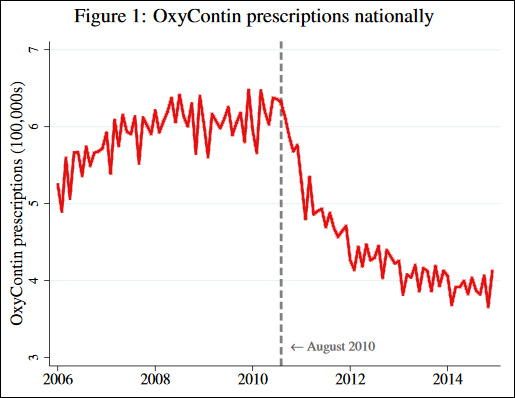Today Alex Tabarrok highlights a new study that, as he says, should shock even those of us who consider ourselves stone cynics. The subject is prescription opioid abuse.
In 2010, Purdue Pharmaceutical introduced a new version of OxyContin that was more difficult to be abused. Doctors who worry about balancing genuine pain management against the possibility of abuse would be happy about this. Their prescriptions of OxyContin would likely go up. Conversely, doctors who are basically pill mills would be unhappy. They’d most likely switch to other opioids.
Long story short, Molly Schnell analyzed the prescribing behavior of 100,000 physicians and found that:
- 40 percent acted like good doctors.
- 30 percent acted like pill pushers.
(The other 30 percent were somewhere in-between.)
Are you shocked? If not, you really need to work on your cynicism.
Oh, and one more thing: the percentage of pill pushers varies by area. And areas with higher percentages also record higher rates of death from drug abuse.
Unbelievable. I’m speechless because I can’t think of a reaction fit for a family-ish publication. Tabarrok has more if you can stomach it.
UPDATE: I revised the headline to more accurately summarize the study.


















